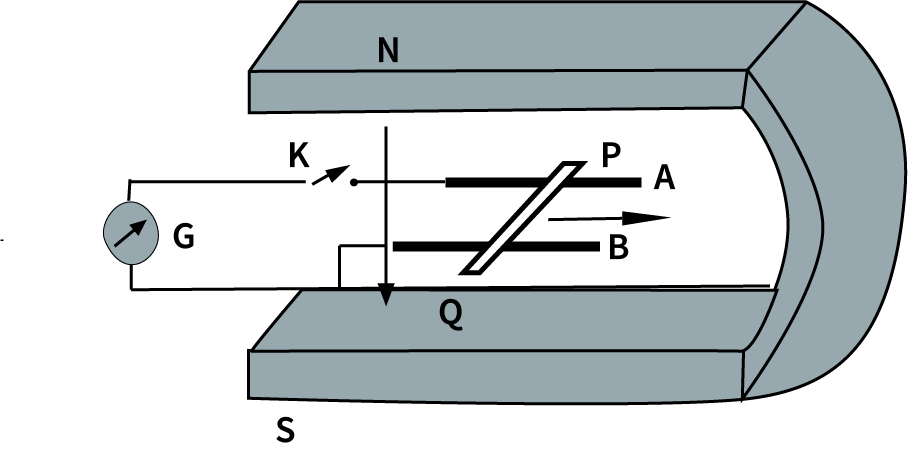Class 12 Physics Chapter 6 Questions and Answers for Exam Success!



FAQs on NCERT Solutions for Class 12 Physics Chapter 6 Electromagnetic Induction 2025-26
1. What is the CBSE-prescribed stepwise method to solve numerical questions in NCERT Solutions for Class 12 Physics Chapter 6?
The official CBSE stepwise method for solving numerical questions in Electromagnetic Induction requires you to clearly state the physical law applied (such as Faraday's Law), write all steps sequentially, show substitutions with proper SI units, and present the final answer with reasoning. Each calculation must be explained, ensuring clarity and adherence to the latest CBSE 2025–26 marking scheme.
2. How do NCERT Solutions for Class 12 Physics Chapter 6 ensure accuracy for both intext and exercise questions?
Solutions for every question in this chapter are created by expert faculty following the NCERT answer format designed for CBSE board exams. Each step is checked for correctness, and the reasoning is aligned with the official solution key, so students develop a clear understanding and avoid common conceptual errors.
3. Are solutions for Electromagnetic Induction available in both English and Hindi mediums as per the latest CBSE syllabus?
Yes, NCERT Solutions for Class 12 Physics Chapter 6 are provided in both English and Hindi mediums. The structure and stepwise explanation remain consistent with CBSE norms in both languages to support all students appearing for the 2025–26 board exams.
4. What key laws and concepts are emphasized in NCERT Solutions for Electromagnetic Induction for Class 12?
This chapter’s solutions focus on Faraday’s Laws of Electromagnetic Induction, Lenz’s Law, calculation of induced EMF, and applications like generators, transformers, and induction phenomena. Emphasis is placed on stepwise application of laws, correct use of formulae, and justification of negative signs (opposing flux changes) as required by the CBSE rubric.
5. Can NCERT Solutions alone prepare students for all types of questions in CBSE board exams for Physics Chapter 6?
NCERT Solutions for this chapter comprehensively cover all board-relevant question types: back exercises, intext conceptual queries, derivations, numericals, and application-based problems. When studied thoroughly, these solutions are sufficient for full marks in board contexts, provided the student understands each step and its rationale.
6. Why is following a step-by-step solution important in CBSE Physics exams, especially for topics like Electromagnetic Induction?
CBSE examiners award marks for each correct step, not just the final answer. For Electromagnetic Induction, showing the statement of the law used, deriving or selecting the formula, performing substitutions, and stating the result with units ensures no marks are lost, even if computation errors occur at the end.
7. What are common mistakes students make when using NCERT Solutions for Class 12 Physics Chapter 6, and how can they be avoided?
Frequent errors include incorrect sign conventions in Lenz’s Law, missing SI units, and incomplete reasoning for induced EMF directions. These can be avoided by carefully writing each step, explicitly stating principles used, and always including units and explanations as demonstrated in the structured NCERT Solutions.
8. How do application-based questions in Chapter 6 (like those involving generators or motional EMF) test conceptual clarity?
Such questions require not only formula application but also a conceptual understanding of how changing magnetic fields generate currents, the interplay of motion and field direction, and real-world effects like Joule heating or practical uses in electrical devices. Stepwise explanations in the solutions develop this clarity, linking theory to application.
9. What is the correct procedure to answer derivation-based questions in Electromagnetic Induction as per the CBSE format?
Begin by stating all assumptions and the relevant physical law (e.g., Faraday’s Law), derive the formula step-by-step with intermediate reasoning, justify each mathematical manipulation, and conclude with the final relation and a brief explanation. NCERT Solutions strictly adhere to this structured approach for derivations.
10. How does practicing with official NCERT Solutions help clarify common doubts during Physics board revision?
Consistent practice with NCERT-aligned stepwise solutions helps students understand the required reasoning, mark allocation, and correct use of concepts. It ensures doubts about law application or calculation steps are addressed, providing a reliable revision method before CBSE board exams.
11. What are the best strategies to maximize marks in CBSE Physics Paper using NCERT Solutions for Chapter 6?
- Understand and apply all laws conceptually before attempting numericals.
- Write each step in detail during solutions, using the CBSE pattern.
- Always include SI units and justify negative or positive signs, especially in Lenz’s law applications.
- Relate real-life examples to theory when possible (for long answers).
- Revise key formulas and derivations using the structure given in official NCERT Solutions.
12. What are some misconceptions about induced EMF and current directions, and how do the NCERT Solutions address them?
Students often reverse the direction of induced current or incorrectly apply the right/left hand rules. The NCERT Solutions clarify this by providing diagrams, explicit application of Lenz’s Law, and written justifications for direction, minimizing such conceptual errors in board exams.
13. In what ways are derivations and application-based answers structured differently in NCERT Solutions for Chapter 6?
Derivations require a systematic presentation of each mathematical step, logical reasoning, and physical justification, while application-based answers focus on real-world scenarios, explaining the link between theoretical law and practical outcome. Both types emphasize clarity, formula usage, and reasoning as per CBSE standards.
14. Why is it important to write answers in official CBSE and NCERT format for Physics Chapter 6?
Official CBSE and NCERT format ensures each answer matches marking scheme requirements, demonstrating logical understanding, proper law application, and complete reasoning. This approach increases scoring potential and meets examiner expectations for both short and long answers in Electromagnetic Induction.


























